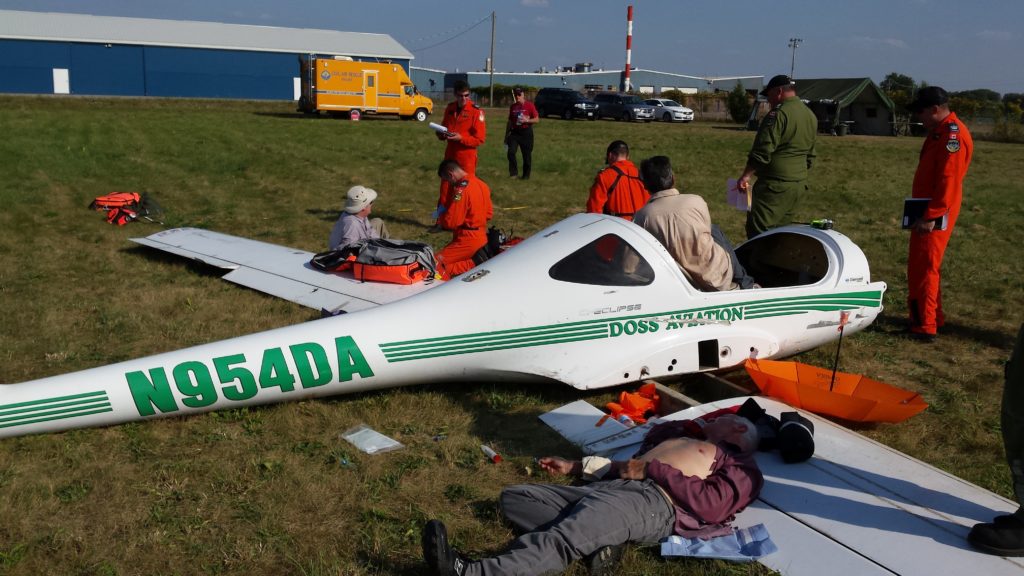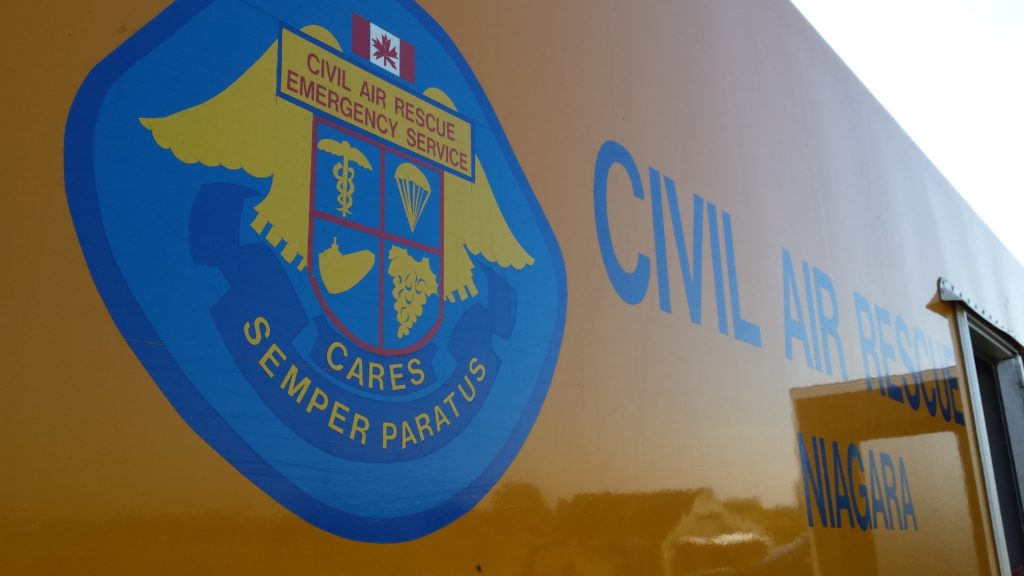Estimated reading time 6 minutes, 1 seconds.
When an aircraft crashes, a hunter or hiker becomes lost, or a small boat is in distress, volunteer searchers are often the first to spot and reach the scene. But when the conditions of the victims or the terrain exceed their medical or rescue capabilities, the incident is transferred to Royal Canadian Air Force (RCAF) search and rescue (SAR) personnel.
That hand-off requires well rehearsed standards and communication protocols, sometimes a challenge for volunteers who don’t train as often as the military professionals.

Variations of that challenge were repeated numerous times this week in and around Hamilton, Ont., during SAREX 2017, an annual national training exercise and competition for the military’s SAR technicians and aircrews and for the pilots and spotters of the Civil Air Search and Rescue Association (CASARA).
CASARA is a national volunteer organization established in 1986 and funded by the Department of National Defence. Its trained members fly their own aircraft, work in RCAF aircraft as extra spotters, or augment ground and marine search operations.
“We challenge them with different taskings–air taskings, ground taskings–and different ways to define a search area and to be able to work with the military, to talk with each other and to improve communication,” explained Maj Claude Courcelles, the national CASARA liaison officer for 1 Canadian Air Division, based with 424 Transport and Rescue Squadron at 8 Wing Trenton, Ont.
CASARA members don’t have the volume of daily training acquired by RCAF aircrews and SAR techs, “but they are very good at what they do,” he said. Nonetheless, when there are opportunities like SAREX to work together in an exercise, the goal is to “see if they can apply the training and stay within the policies.”
Many of the scenarios during SAREX were designed to create an “interaction” between CASARA and military aircraft, forcing both to follow standard operating procedures.
“We try to make them come together around the same time,” said Courcelles. “But who finds [the downed aircraft or vessel in distress] first, that’s the unknown. We make it as real as possible.”

The hand-off between the two has established protocols that can sometimes pose a challenge for volunteers not well-rehearsed with each step.
“When CASARA finds a scene, how do you transfer that scene to the military?” Courcelles said. “They have to advise the Joint Rescue Coordination Centre or [in this case] the SAREX Ops (operations centre), and when the military aircraft comes in for the rescue, to send that CASARA aircraft higher so they become a communication platform; they orbit at a higher altitude, and the Hercules or Griffon [airplane or helicopter] can work underneath them while they secure the airspace and advise of any inbound traffic.”
One medical scenario, conducted at the Brantford Municipal Airport, put that interaction to the test. When a small airplane transiting a remote area of northern Ontario with four people on board fails to reach its destination or radio in, a CASARA aircraft is dispatched by the Joint Rescue Coordination Centre in Trenton to conduct a grid search along its filed flight plan to pick up its emergency locating beacon. Once the downed aircraft is spotted on a rough field used periodically as an emergency airstrip, but with limited road access, a ground team reaches the scene to find casualties beyond its level of medical care.
Their call to the JRCC for medical support prompts the arrival of a CC-130H Hercules, which dispatches survival and medical gear and two SAR techs via parachute. The techs must land safely, secure the site and their medical and life support kit, and then identify, treat and prepare each patient for extraction by a CH-146 Griffon helicopter.
Despite temperatures that soared to over 40C with the humidity throughout the week, forcing aircrews and CASARA pilots to manage weight and fuel very carefully, “I am very satisfied with the performance of the volunteer organization,” said Courcelles of the nine teams from Ontario, Quebec and Nunavut that competed. “They have all outperformed my expectations this week, despite the weather. Some had communication challenges as we expected, but it was rectified very quickly, and [during] the second tasking they did much, much better.”
“Each sortie is being evaluated, [so] there is a feeling of pride for their region and their capabilities,” he added.
“The biggest takeaway is always communications, communications, communications,” for both the military and civilian organizations, said LCol Leighton James, the commanding officer of 424 Squadron, which hosted the event.








